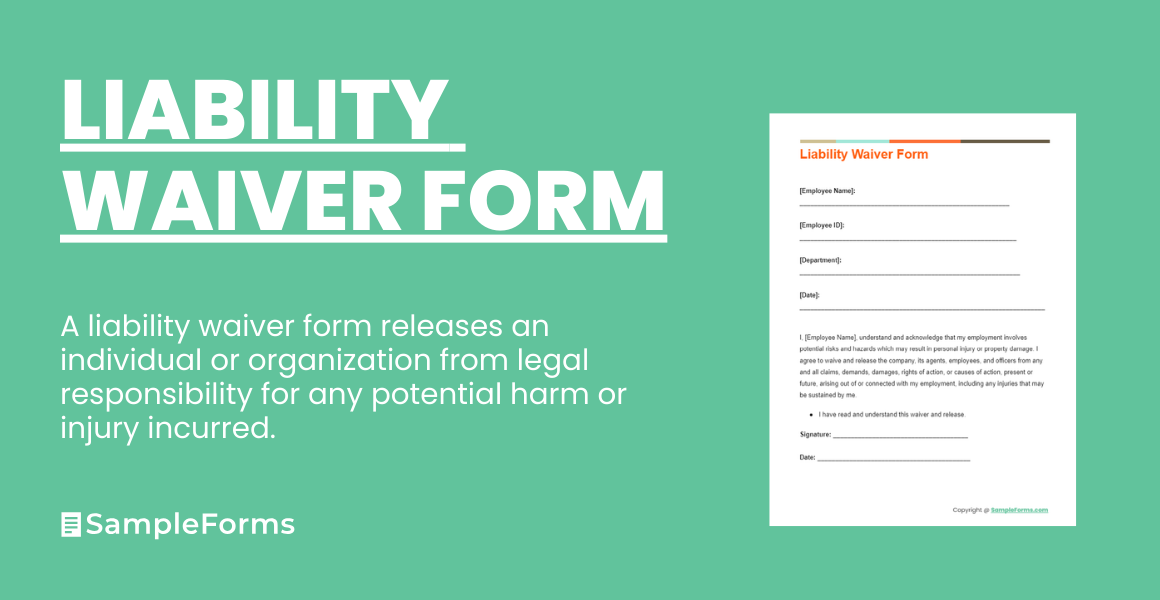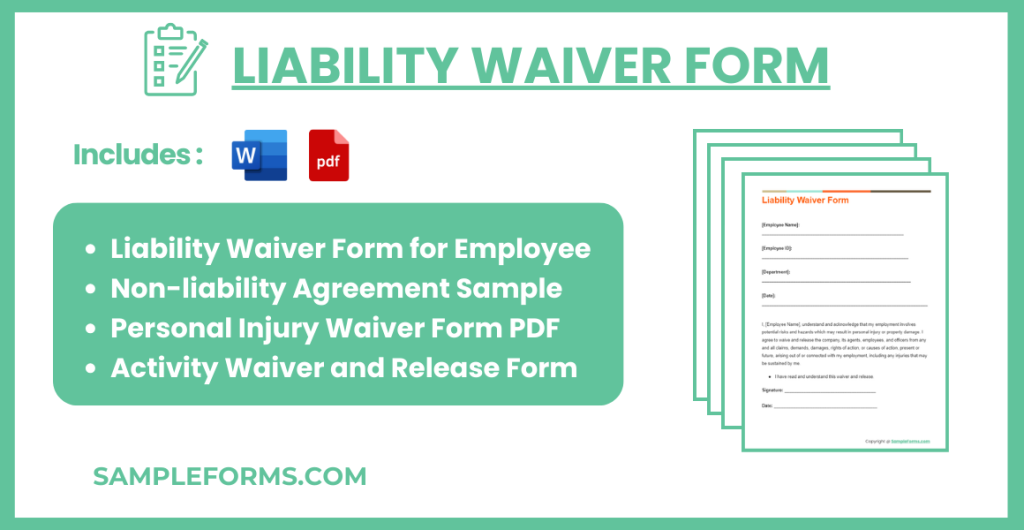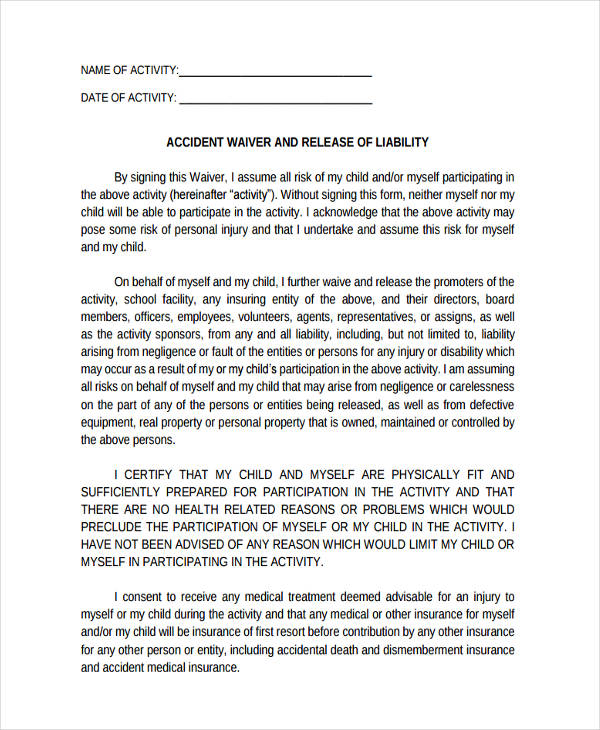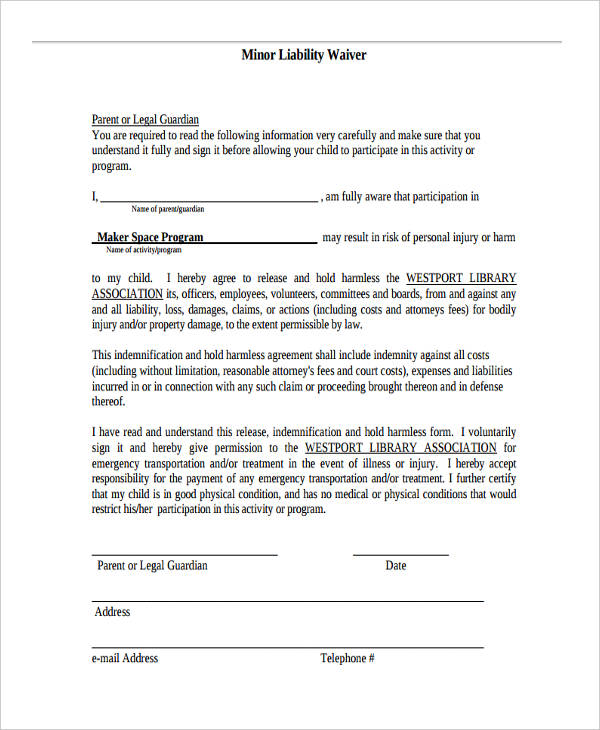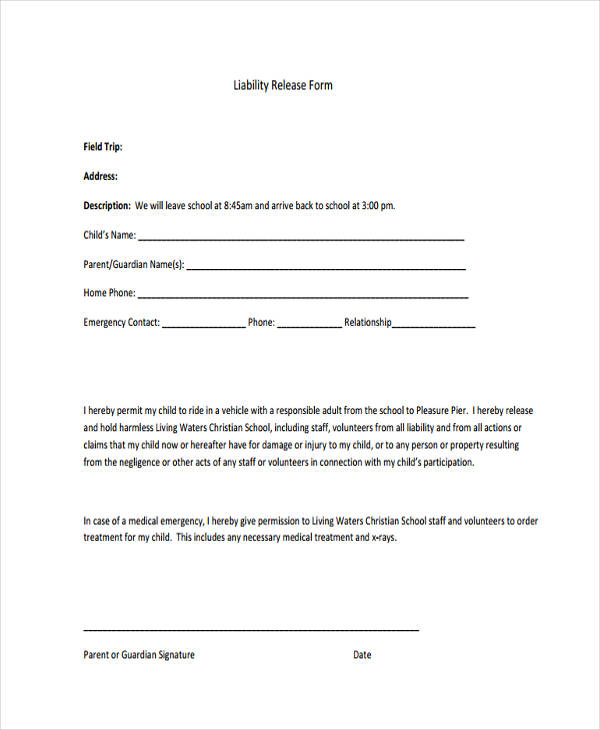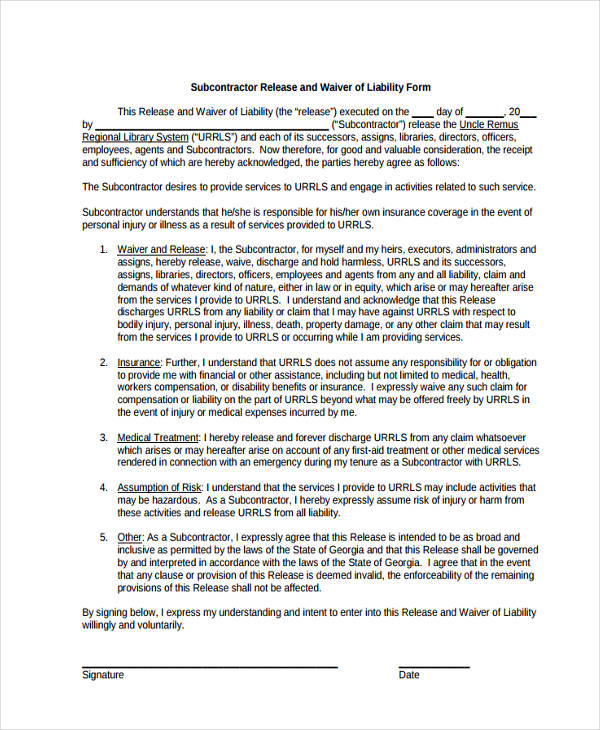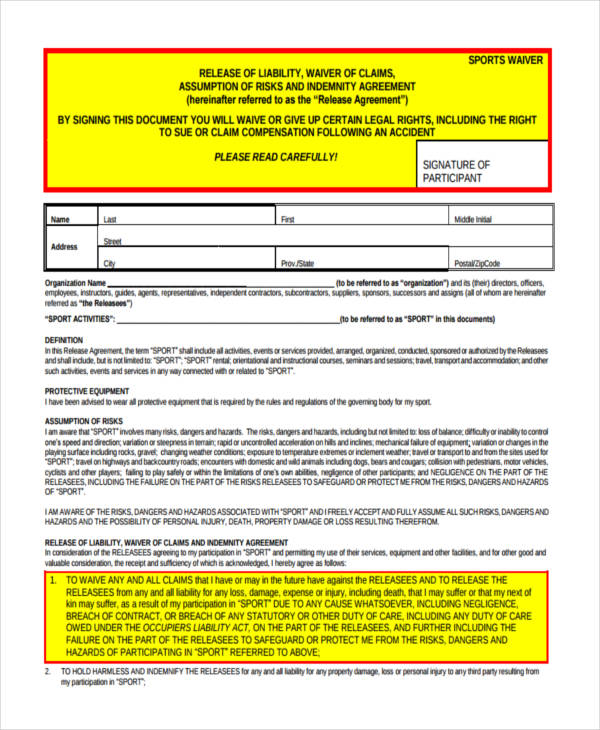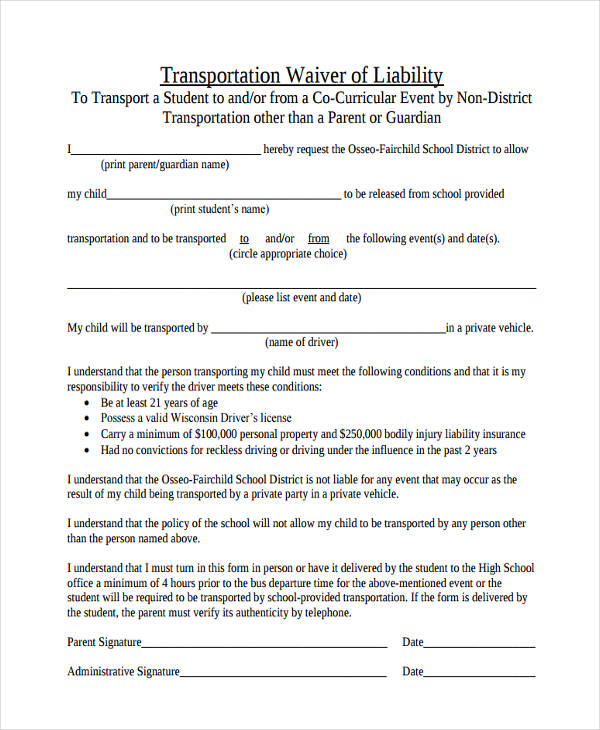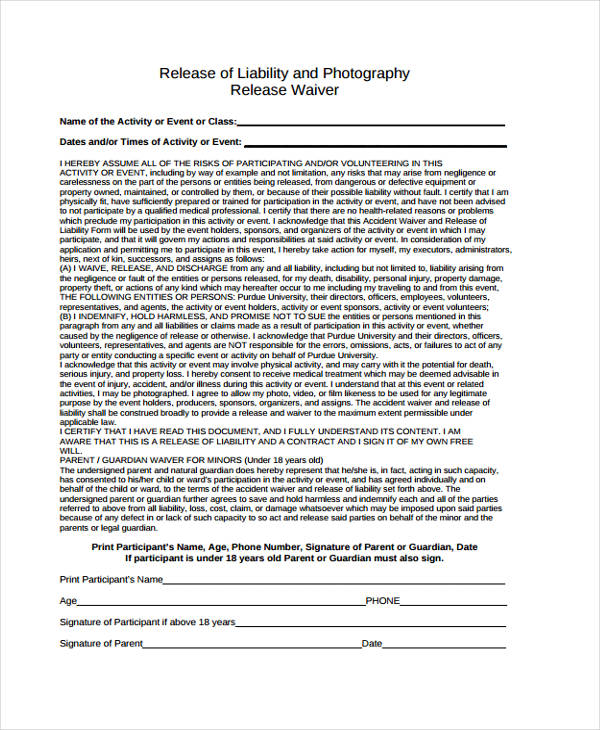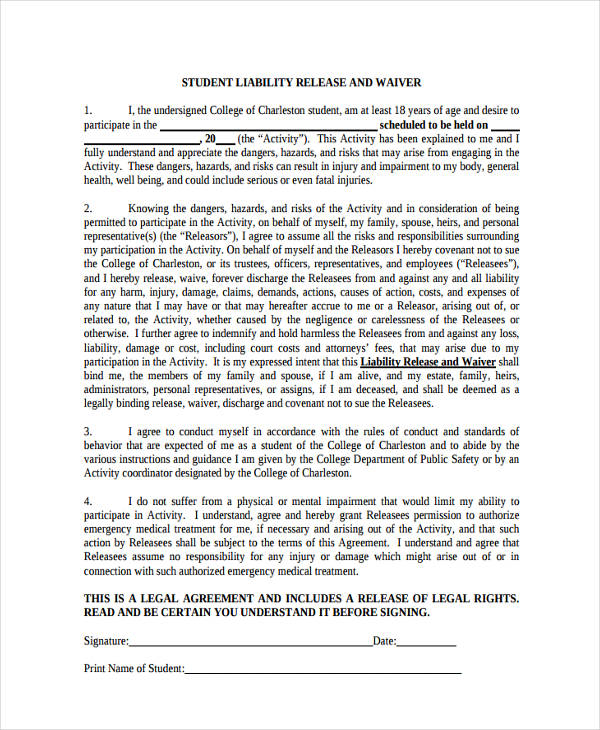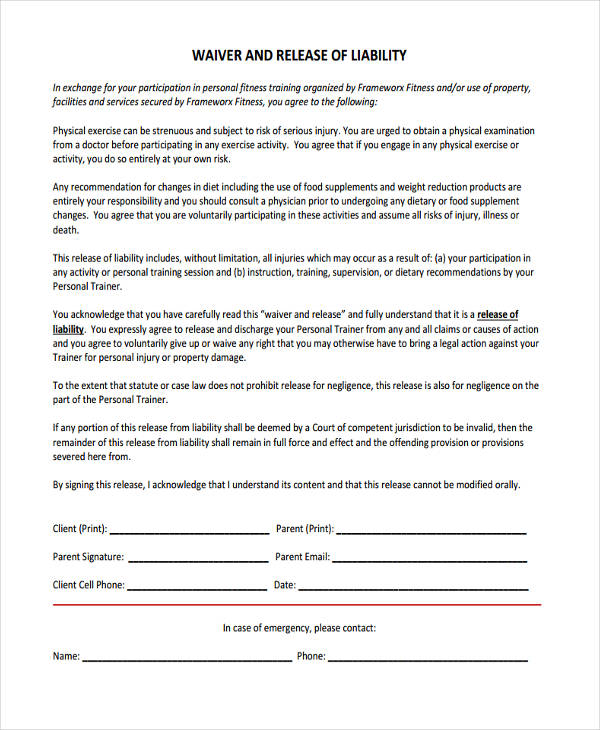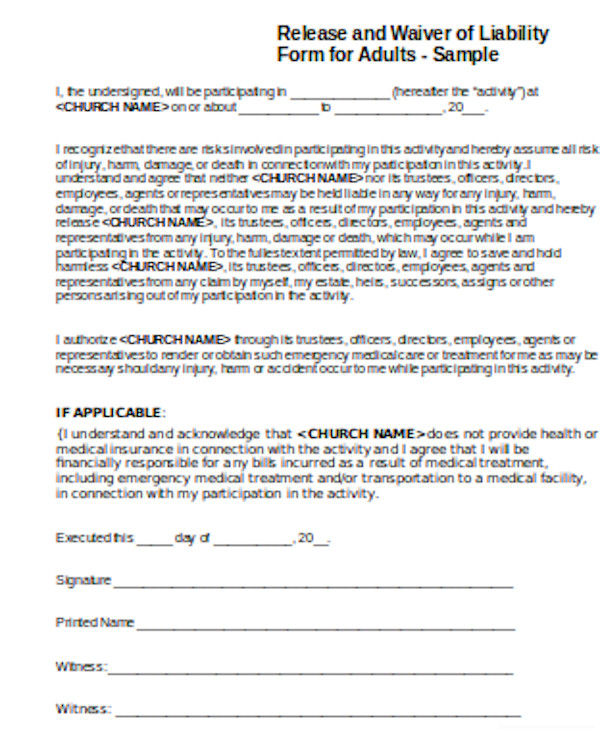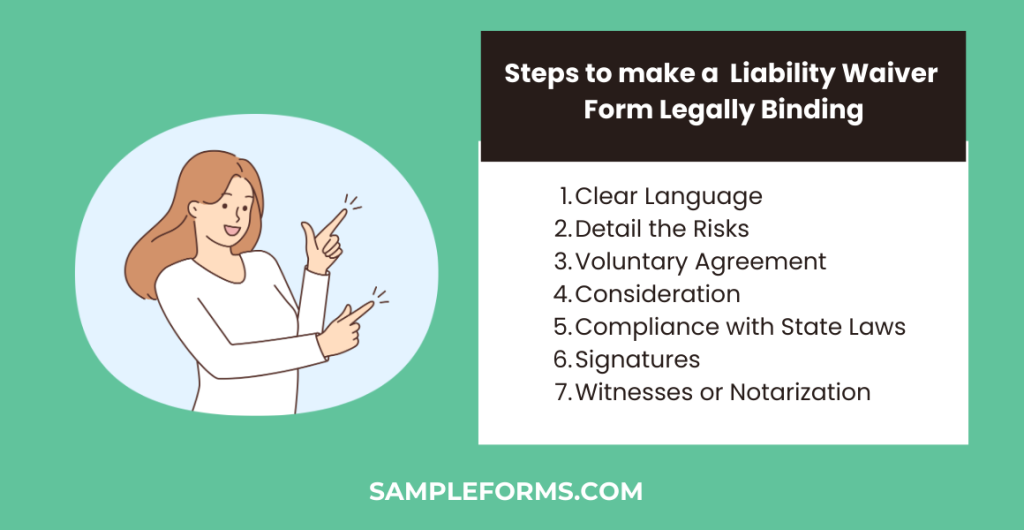Navigating the nuances of Liability Waiver Forms is crucial for anyone hosting or organizing events, offering services, or engaging in activities that pose risk. This comprehensive guide delves into the intricacies of crafting effective waivers, ensuring both parties understand their rights and responsibilities. By incorporating key insights into Waiver Form and the pivotal aspects of Public Liability Form, readers will gain a robust understanding of how to protect themselves legally while providing safe, enjoyable experiences. With practical examples and expert advice, this guide is an indispensable resource for mitigating risks and fostering trust.
Download Liability Waiver Form Bundle
What is a Liability Waiver Form? – Meaning
A Liability Waiver Form is a legal document that a participant signs to acknowledge awareness of the risks involved in an activity and agrees to waive their right to hold the organizer liable for any injuries or damages that may occur. This form serves as a crucial tool in managing public liability, effectively communicating the potential risks to participants and protecting the organizer or service provider from legal claims. It’s a foundational aspect of risk management, ensuring that both parties are informed and agreeable to the terms of engagement.
Liability Waiver Form Format
Heading: [Event/Organization Name] Liability Waiver Form
Section 1: Participant Information
- Name
- Address
- Contact Information
Section 2: Activity Description
- Detailed description of the activity or event
Section 3: Acknowledgment of Risks
- A clear statement acknowledging the risks involved in the activity
Section 4: Waiver and Release of Liability
- A clause where the participant waives the right to hold the organization liable for any injury or damage
Section 5: Emergency Contact Information
- Name
- Relationship
- Phone Number
Section 6: Agreement to Comply
- A statement that the participant agrees to follow all the guidelines and instructions
Signature Line:
- Participant’s Signature
- Date
Liability Waiver Form for Employee
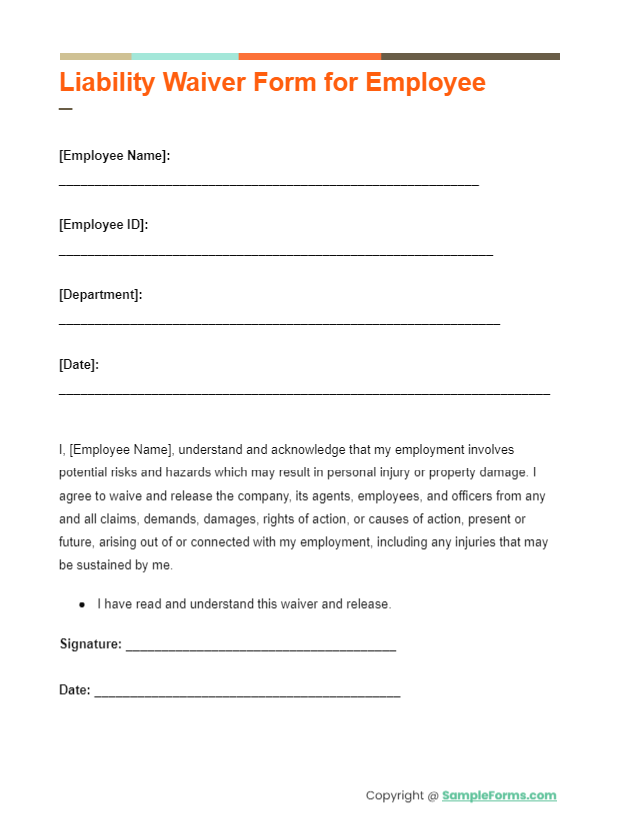
The Waiver of Liability Form for employees safeguards companies by outlining risks at work, ensuring informed consent and legal protection for both parties involved.
Non-liability Agreement Sample
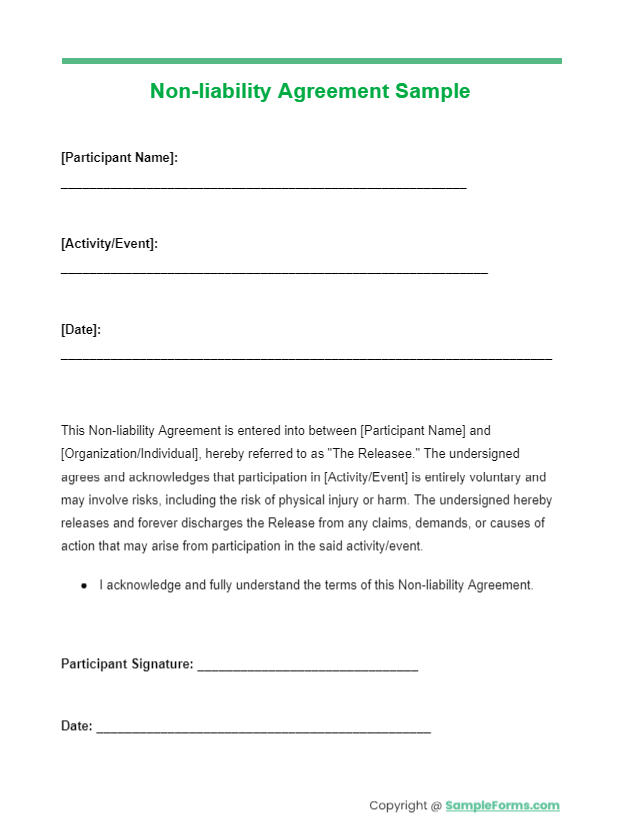
This Non-liability Agreement Sample, designed as a Sports Waiver Form, clearly delineates the risks participants assume, thereby protecting organizers from legal claims.
Personal Injury Waiver Form PDF
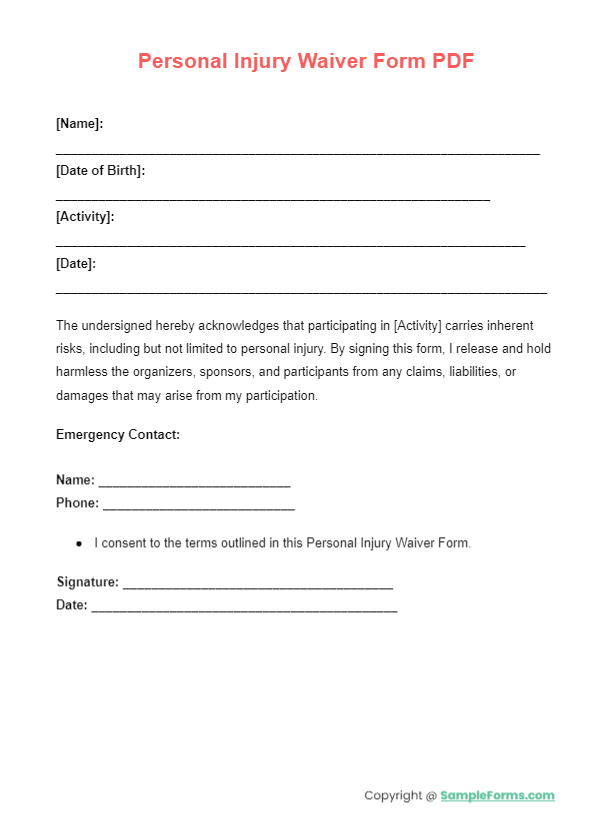
A Personal Injury Waiver Form PDF serves as a Third-Party Liability Form, detailing the relinquishment of legal claims against organizers in case of injury.
Activity Waiver and Release Form
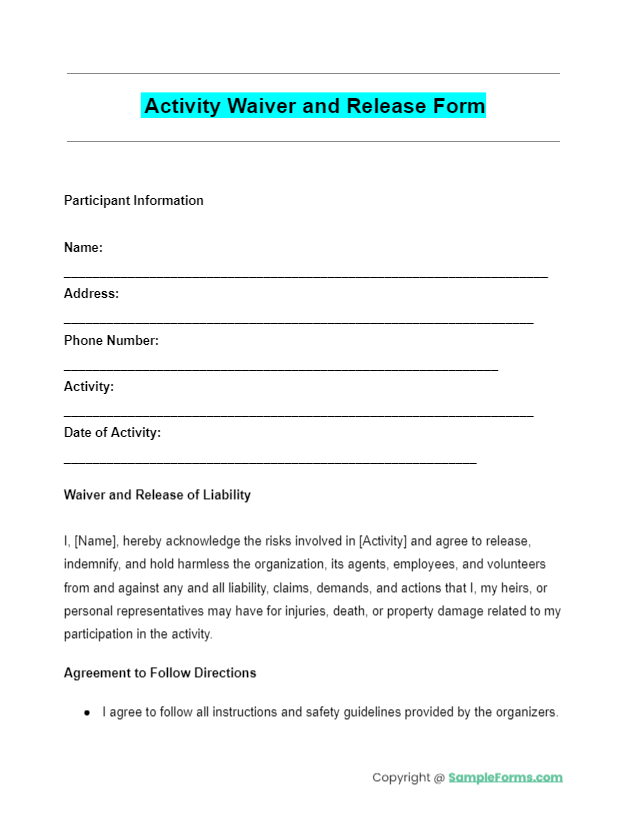
More Liability Waiver Form Samples
Accident Waiver and Release of Liability
Volunteer Release Waiver
Minor Liability Waiver
Liability Release Form
Subcontractor Release and Waiver of Liability
Sports Liability Waiver
Transportation Waiver of Liability
Adult Waiver of Liability
Photography Liability Waiver
Student Liability Waiver
Training Liability Waiver
Printable Liability Waiver Form
How to Write a Liability Waiver and Mention the Elements to Include?
Liability waiver can be written using the Release of Liability Forms. These are usually written in a paragraph form where statement is clearly stated. Here are the following elements or components included in, but not limited to a liability waiver form for an activity:
1. Understand the Risks Involved
Before signing a Waiver of Liability, thoroughly understand the risks associated with the activity or service. Ensure you’re fully aware of what potential physical, financial, or legal risks you might be agreeing to take on.
2. Read the Waiver Carefully
Take your time to carefully read every clause of the waiver. Pay special attention to any language that absolves the organization of liability, even in cases of negligence on their part. If anything is unclear, don’t hesitate to ask for clarification.
3. Consider Your Own Health and Safety
Assess your own health and safety before signing a waiver. If you have pre-existing conditions or concerns that could be exacerbated by the activity, weigh these against the risks outlined in the waiver.
4. Seek Legal Advice
If you’re unsure about the implications of the waiver, it’s wise to seek legal advice. A legal professional can help you understand the waiver’s terms and how they might affect your rights.
5. Evaluate the Provider’s Reputation
Research the organization or individual providing the activity or service. A reputable provider with a strong track record of safety and professionalism is more likely to offer experiences where risks are well-managed and minimized.
Ways to Know If You Should Sign a Waiver of Liability
We all have to be careful and should acquire enough knowledge in signing every forms that are presented to us. And there is no need to ask why, because it is pretty obvious that not all forms are just ordinary piece of paper.
But there are also legal and once you have signed it, it could be used against you. That is why in order to avoid this, you have to take time in reading before signing them. The following are few ways to know if a waiver is worth signing for:
- Read and understand the statement/s in the waiver carefully.
- If in case that you do not understand few things or maybe everything about it, do not be afraid to ask.
- If the waiver is not compulsory then you are not required to sign it.
- Search for information that might help you determine if he waiver is legal.
- If there are few things that you seem to disagree, try to negotiate it (and if negotiation does not make any changes, do not sign the waiver).
- You should also understand and take note of the consequences mentioned or upon signing the waiver form.
This article has provided you few samples of liability forms. In order to have more references that could help you identify if the waiver forms are valid, refer to general release of liability forms.
What makes a Liability Waiver Enforceable?
An enforceable Liability Waiver Form must be clearly written, understandable by all parties, and specifically outline the risks involved in the activity. It should also be voluntarily signed by the participant, indicating their informed consent to waive legal rights. Including an Event Waiver Form in events, for instance, should detail potential risks and state that participation is at the individual’s own risk, ensuring it is both comprehensive and comprehensible. Additionally, the waiver must comply with state laws, as legal standards can vary. For enforceability, it cannot waive liability for intentional acts or gross negligence.
Is a Waiver the same as a Release of Liability?
While often used interchangeably, there’s a subtle difference between a waiver and a Release of Liability Form. A waiver is a preventative measure, taken before an activity takes place, with participants acknowledging the risks involved. A Release of Liability, on the other hand, typically occurs after an incident or dispute has arisen, with one party agreeing not to hold the other responsible for any claims. Both forms are integral in risk management strategies across various sectors, including Construction Lien Waiver Form for construction projects, ensuring clear communication and legal safeguarding from claims.
How do I make a Liability Waiver Form Legally Binding?
To make a Liability Waiver Form legally binding, follow these steps:
- Clear Language: Use straightforward language that can be easily understood. For instance, a Damage Waiver Form should distinctly list the types of damages being waived.
- Detail the Risks: Specifically enumerate the risks associated with the activity. For example, an Employee Waiver Form should list potential workplace hazards.
- Voluntary Agreement: Ensure that the signing of the form is entirely voluntary, without any coercion.
- Consideration: This legal term refers to something of value exchanged between the parties. Even a nominal fee, as seen in Fee Waiver Form, can constitute consideration.
- Compliance with State Laws: Different jurisdictions have varying requirements for waivers to be valid. Research and comply with local laws, much like how Restaurant Waiver Form adhere to specific health and safety regulations.
- Signatures: Have all parties sign the document. For real estate transactions, an Appraisal Waiver Form must be signed by both the lender and the borrower to be valid.
- Witnesses or Notarization: While not always necessary, having a waiver witnessed or notarized can add an extra layer of enforceability.
What is the Purpose of a Liability Waiver?
The purpose of a Liability Waiver, including an Athlete Waiver Form, is to protect organizations from legal claims by having participants acknowledge and accept the risks involved.
Can you write your own Liability Waiver?
Yes, you can draft your own Liability Waiver, similar to a Youth Waiver Form, but consulting with a legal professional ensures it meets all legal requirements and protections.
When should you consider getting a Liability Waiver?
Consider getting a Liability Waiver, like an Insurance Waiver Form, before any event or activity that involves risks to participants to mitigate potential legal liabilities.
What is a Limitation of Liability Waiver?
A limitation of a Liability Waiver, such as an Accident Waiver Form, is that it cannot absolve an organization from accountability for negligence or failure to ensure a safe environment.
Is a Waiver of Liability a Legal Document?
Yes, a Waiver of Liability is a legal document, akin to a Financial Waiver Form, recognized by courts to limit legal claims against organizations or individuals hosting activities.
Related Posts Here
-
Performance Review Form
-
Event Contract Form
-
Contest Registration Form
-
Waiting List Form
-
Restaurant Schedule Form
-
Mobile Home Bill of Sale
-
Landlord Consent Form
-
60-Day Notice to Vacate Form
-
Financial Statement Form
-
Product Evaluation Form
-
Construction Contract
-
School Receipt Form
-
Restaurant Training Form
-
Daily Cash Log
-
Volleyball Evaluation Form
